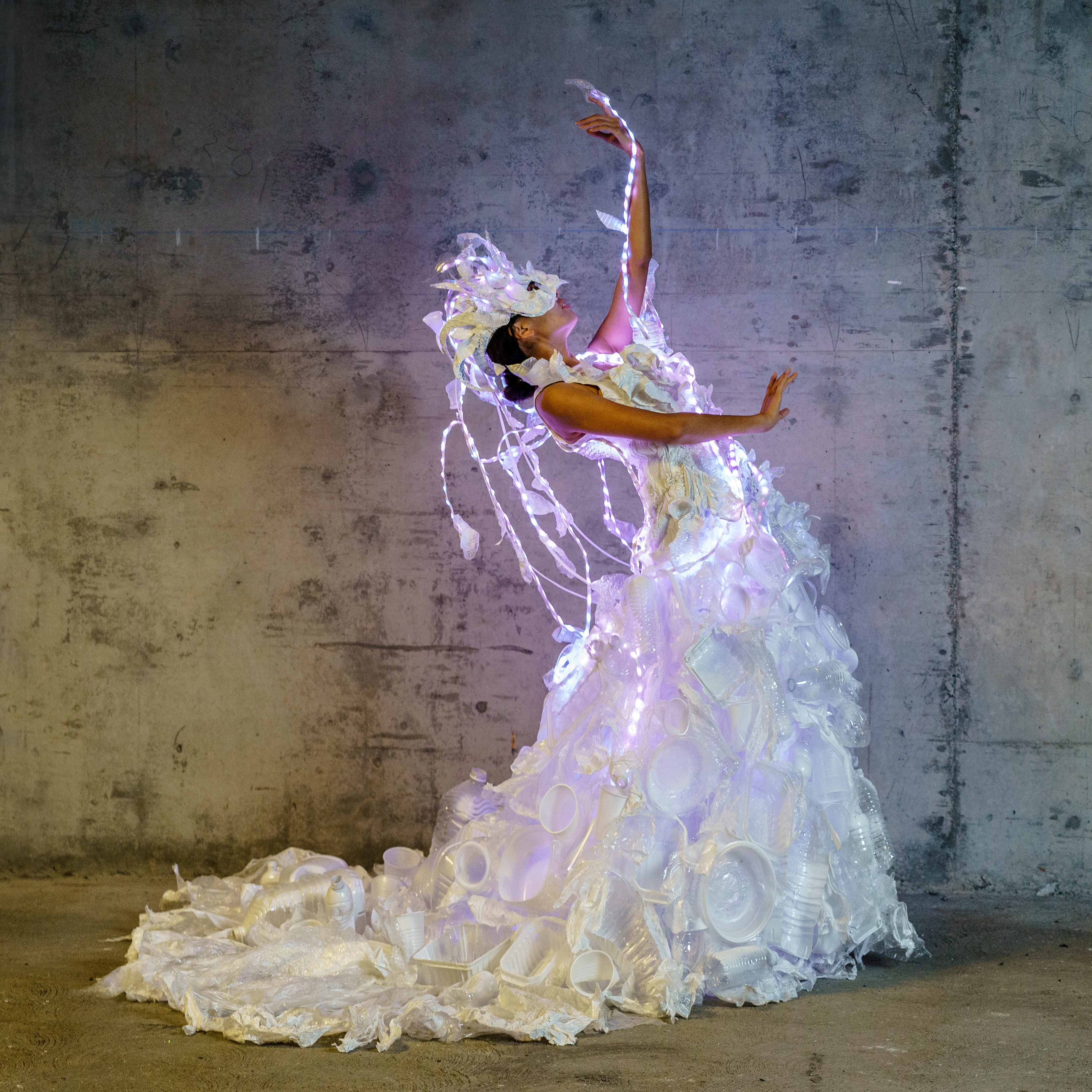



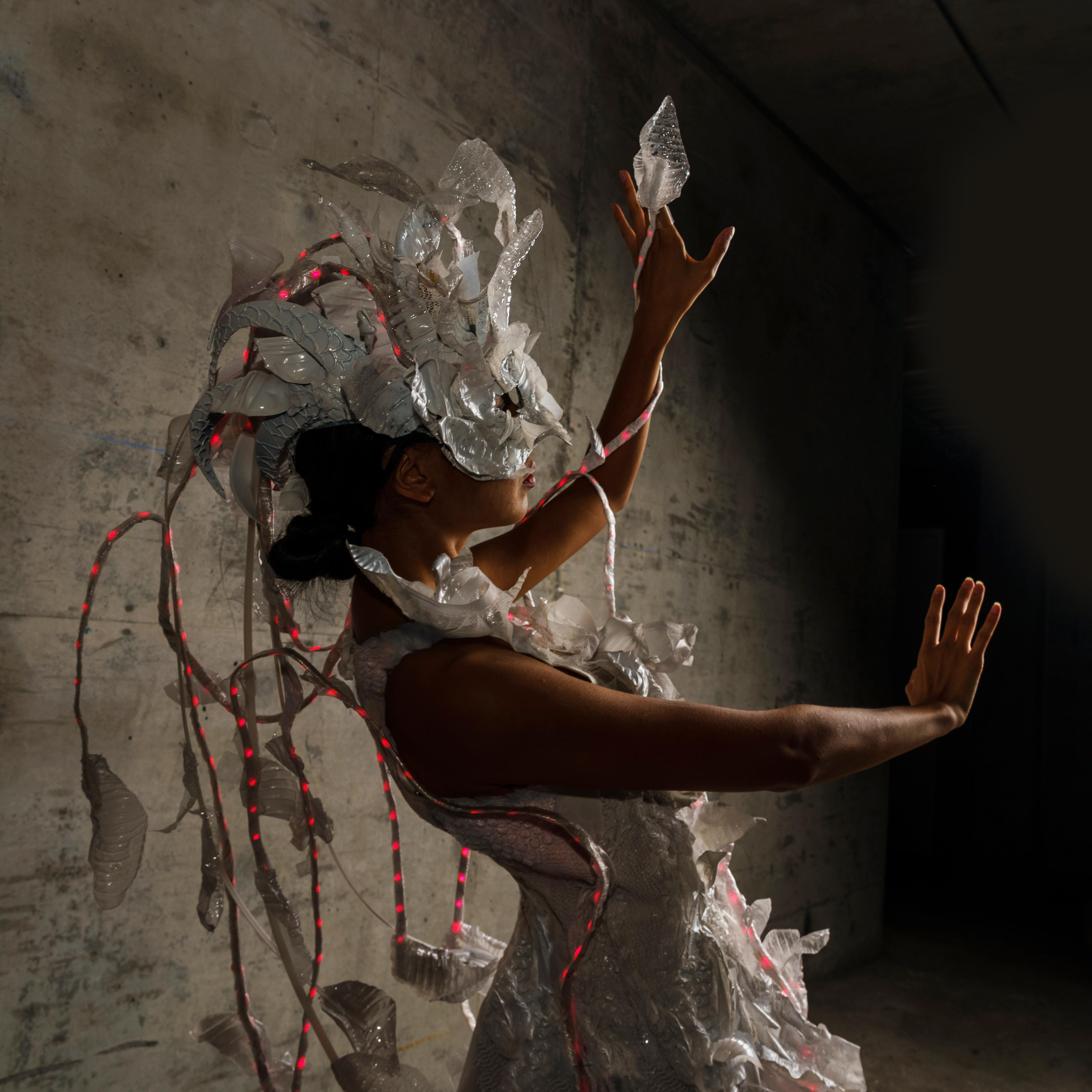





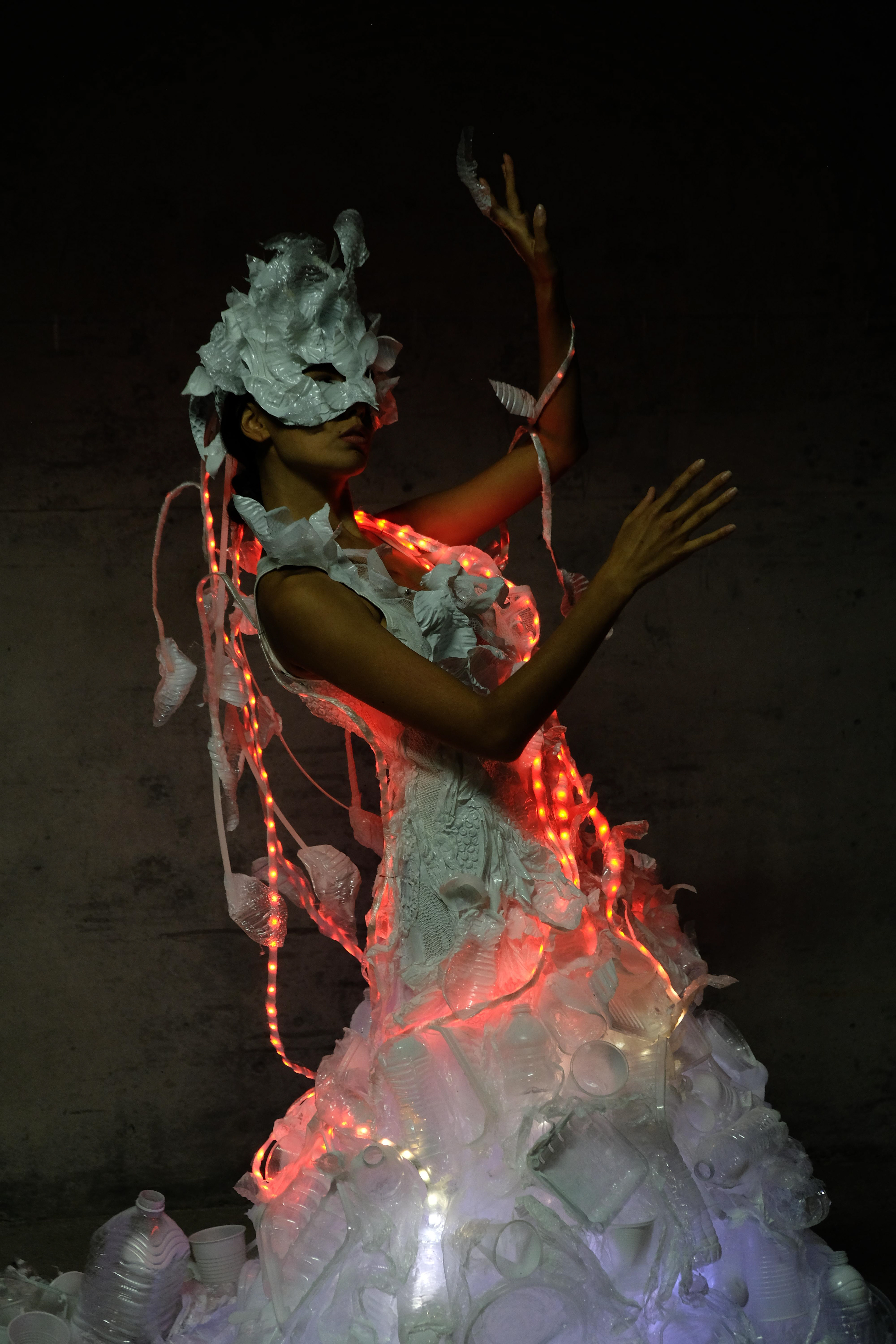

PLASTIC BEAUTY, 2019
While being an artist, I am also a freelance dreamer at the Beautiful Planet Earth. Concerned about the huge and growing problem of plastic pollution of the ocean made me wonder if I can contribute to its salvation on a larger scale than what I do in my everyday life.
For the dress I used my one plastic waste, collected plastic bottles, cups, containers everywhere I went. I realized how much plastic I bring home from grocery stores. It was a new look at my everyday life. While collecting the plastic garbage on the streets I talked to people about why I was doing it. People seem to understand the impact of plastic, they know about wildlife that has been killed after ingesting or has been entangled in plastic.
However, no single person, no single country can solve this problem. We need to work together to increase the awareness of this problem, support research and proposals to reduce plastic use, impose much higher costs on using it. The political will that is required to address this problem also needs to be awoken.

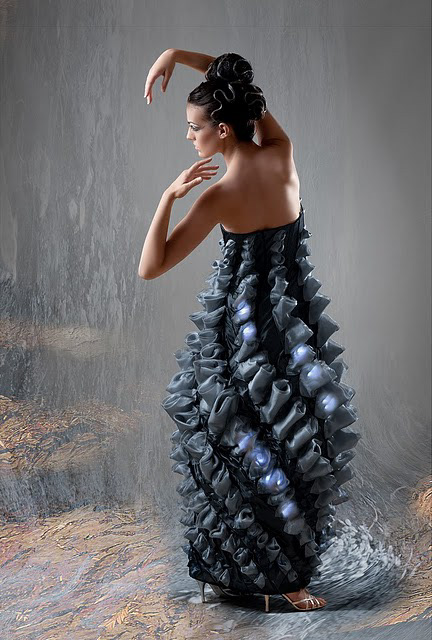

This black gown includes 384 white LEDs, installed in curved channels, and a monochromatic design to complement the musical selection and choreographed lighting sequences. Its construction features triangular white fabric accents which serve to diffuse the lighting effects. The lighting patterns can follow selected music or operate in contrast to it. To the wearer, the gown feels virtually identical to a standard one, as evidenced by 2 fashion show models who road-tested it on the runway.
As the techno music begins, we see groups of lights glowing here and there. The choreography transitions into a raindrop effect, where lights slide down different curved channels of the dress much as water would trickle down a windowpane. This effect intensifies as the music accelerates and lights begin chasing each other down the dress, matching the pulse of the techno beat.
Suddenly, the lights begin easing up the dress, seemingly of their own accord. The moments of darkness between each illumination seem important also, as they serve as a “breath” between patterns. Soon the lights resume again, edging up, then receding, climbing the dress like organic technology, then moving away—expanding, contracting, then releasing into snake-like strands which move across the dress like an elegant carousel. The carousel rotates more and more quickly, coming to a climax, and then the lights resume a vertical sliding motion. Lights merge, bounce off each other, and pull back towards each other, as if drawn by magnets. Single groups of lights begin moving horizontally again, like two mini carousels rotating in opposite directions. They spin more and more quickly, until meeting in the center, then moving away. Two balls of light race to interact, spin, and then dart away. The piece climaxes with the illumination of all lights, a fitting ending to the dramatic choreography.
2008-2009
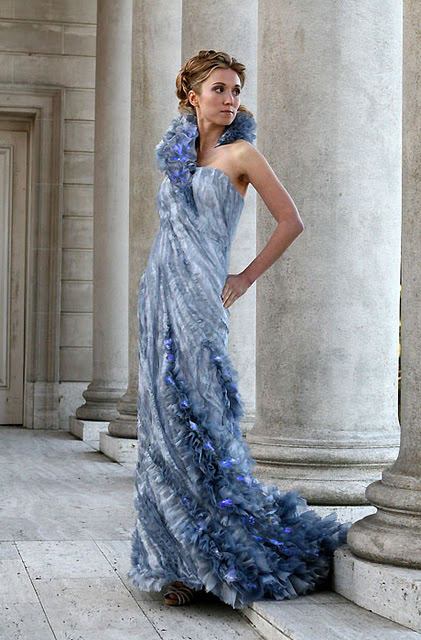


What if a dress could reflect and enhance a vocalist’s performance?
In this video, Cary Ann Rosko performs a stunning vocal improvisation. Her gown includes 76 groups of embedded lights, each diffused via fiber optics. As Rosko’s song begins, the lights mimic her tone and dynamic: Cool blues increase in intensity as she crescendos, then recede as she hits higher notes.
During the brief interlude between vocalizations, the twinkling lights mirror the musical accompaniment. The dress itself appears to breathe in time with the vocalist’s performance.
In the third movement of the piece, the light sequences increase in complexity and speed. Gentle ebbs and flows gives way to trickles, then single lights chasing others in curved motions. As the song closes, the lights near Rosko’s face also illuminate, remaining static even as the lights in the skirt race downwards. The piece culminates with a brightening and ebbing of lighting as the blues twinkle in muted radiance.
The lighting has added a new dramatic element to the vocal performance. A designer chose the most appropriate colors (in this case, blues and occasionally purples), then programmed each glimmer, twinkle, and movement sequence into the lighting software. The software can accommodate numerous other colors, patterns, and movement sequences, all of which can accentuate a vocalist’s performance.
2008


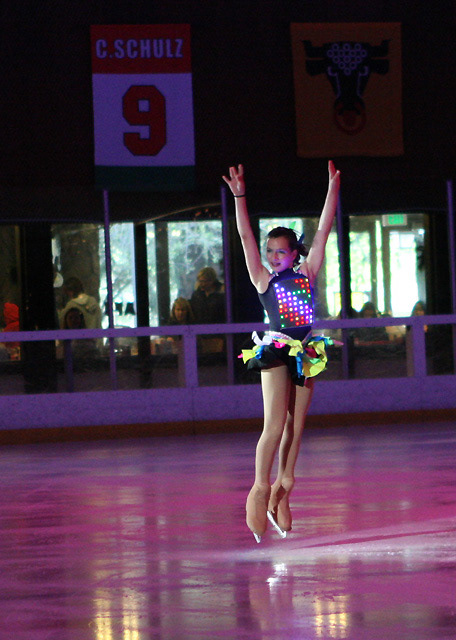
In 2010, choreographer Lisa Navarro and figure skating coach Colleen Phillips chose to incorporate Marina's technology into their protege's performance at the Crystalline Figure Skating Competition 2010 in Santa Rosa, CA.
In preparation for the performance, Marina installed lighting technology into the skater’s costume. The addition of lights to the costume’s front did not affect the weight of the costume, nor did it restrict the skater’s range of motion.
The skater Isabella Moro performed to Madonna’s "I'm Going Bananas", and the light choreography personified the whimsical, humorous nature of the piece. At times, the light sequences reflected the lyrics of the song by forming bananas and bats in the belfry. At other times, the software’s real time beat and pitch recognition provided playful animation which reacted to the music and complemented the movements of the skater.
Not being just a technology provider, Marina aims to facilitate light choreography, to complement the performer and add to the artistic value of the piece itself.
2010


Imagine you’re an audience member seated in the Ruth Finley Person Theater at Wells Fargo Center for the Arts. This is the largest fixed seat venue in Sonoma County, north of San Francisco, and you’ve come here to watch The Nutcracker. You see a soloist in a white and sequin-flecked tutu take the stage. She leans forward to begin her piece, and the tutu fabric illuminates. The lights roll back and forth in harmony with musical cues as the dancer moves in time to the music. You’re witnessing a convention being turned on its head.
Here is a re-imagining of a traditional ballet tutu with the added infusion of high intensity LED lighting. The lights are woven throughout several layers of fabric in the skirt, concealing the accompanying electronics. By contrast, the bodice is nude-colored with sequins—the sequins which in turn, catch the light cues from the skirt and sparkle. The dancer moves with ease through the choreography, as the tutu is lightweight and sturdy, yet flexible during the performance.
Notice how the choreography initially works to accentuate the lighting cues in the skirt, as the dancer tilts, presents the skirt to the audience, and rocks back and forth as the lighting slides back and forth with her in time to the music. The lights remain visible even on the underside of the tutu when the dancer turns upstage. As the piece progresses, the lights do as well, moving from softer colors to bright green, then culminating in red at the end.
Choreographer Nikolay Kabaniaev worked closely with designer Marina Polakoff to create movements which complemented the lighting effects. This was Kabaniaev’s initial exposure to this form of lighting technology, and it afforded him the opportunity to work with a new form of media. The collaboration resulted in a pioneering form of visual art: a fusion of movement and lighting which operated in harmony with the music. Innovation produced an unconventional, performance-worthy piece. The facile software allowed the artists to utilize existing patterns as well as create new ones.